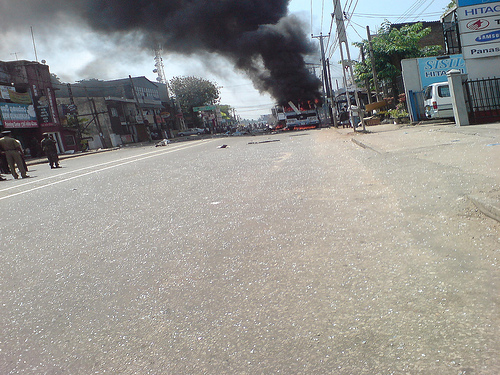Researchers Hope Lessons Learned in Second Intifada Will Open Dialogue About U.S. Transit Security
Researchers at the Mineta Transportation Institute (MTI) hope to open discussion of the safety of U.S. public transit systems with a study of attacks targeting bus systems in Israel, published on Thursday.
The report, titled “Security Awareness for Public Bus Transportation: Case Studies of Attacks Against the Israeli Public Bus System,” authored by Bruce R. Butterworth, Shalom Dolev, and Brian Michael Jenkins of San Jose State University, examines in detail 16 actual and attempted attacks in an effort to provide information on which methods made attacks more lethal and effective countermeasures. The United States has not experienced any successful terrorist attacks against buses.
The MIT database on Terrorist and Serious Criminal Attack against Public Surface Transportation contains details for more than 3,000 attacks between 1970 and 2012. Almost half of those attacks were against buses, bus stations, and bus stops. Eight thousand people were killed and more than 30,000 injured in attacks, according to the data. Bus attacks accounted for 55 percent of fatalities in transportation attacks, MTI says.
Buses are an important fixture of public transportation in developing countries, but remain a primary target for terrorists. The study focused on Israel, however, because bus bombings in Israel account for a large percentage of attacks worldwide. The country was hit especially hit hard during the Second Intifada, a period of West Bank and Gaza strip violence from 2000-2006.
The authors say U.S. transportation regulators should study the attacks listed in the report and determine how applicable the dangers are to current transit systems.
For more on threats facing U.S. bus systems see "GAO: TSA Needs to Complete Risk Assessments of Nation's Commercial Trucking and Bus Industries" and "DHS Unveils MassTransit Cameras That Mimic Black Boxes" from Security Management.
Methods
Suicide bombers targeting buses often use the “leave behind” method, where an IED is left on a bus and triggered by cell phone later, but it is often hard to leave the bomb in a place that would inflict maximum casualties without being seen. Suicide attacks, on the other hand, have been successful in bombing attacks for several reasons.
Buses are ideal targets for suicide bombing attacks because they provide a confined area with little protection for victims. Bombers have figured out there’s a science to bus attacks: When explosives are set off in a confined area like a bus or small room, explosive waves last longer, increasing kill potential. MIT notes this could be applied to subways or trains with greater lethality because of their solid construction “which retains, rather than vents, the air pressure wave.”
Effective practices included stopping the bus some distance before the bus stop to enable the driver to examine waiting passengers before they board and establishing practices for examining passengers who come up to the bus unexpectedly, questioning and interacting with passengers as they board, and training drivers to recognize the design of suicide and bomb vests and lead evacuations.
“All of the cases raise questions,” MIT says. “The most important question, particularly for security officials and transportation operators in the United States, is, how applicable are these cases to the current environment in the United States?”
Read the full report“Security Awareness for Public Bus Transportation: Case Studies."
